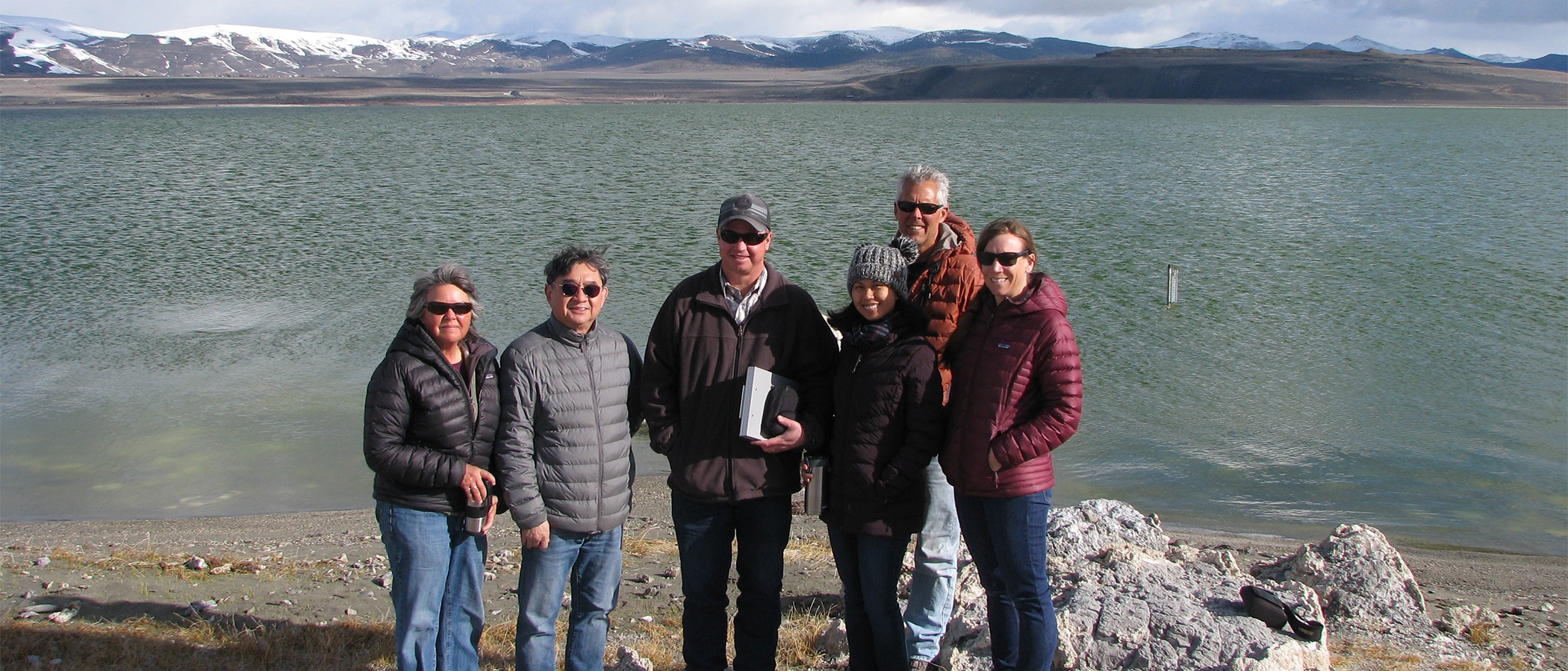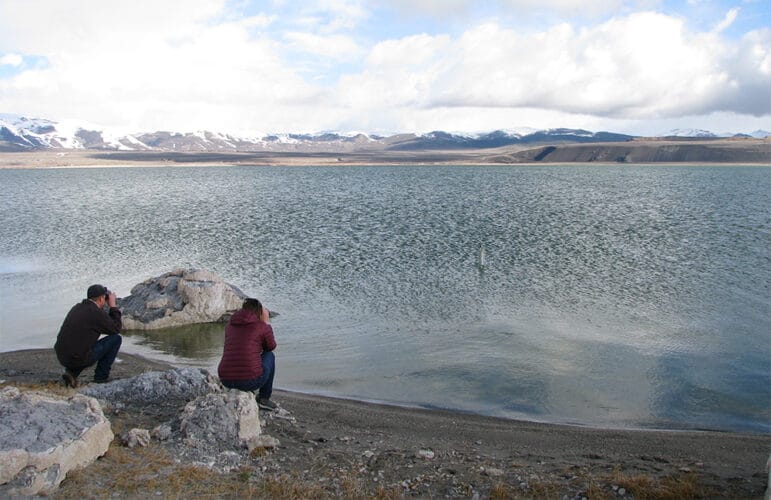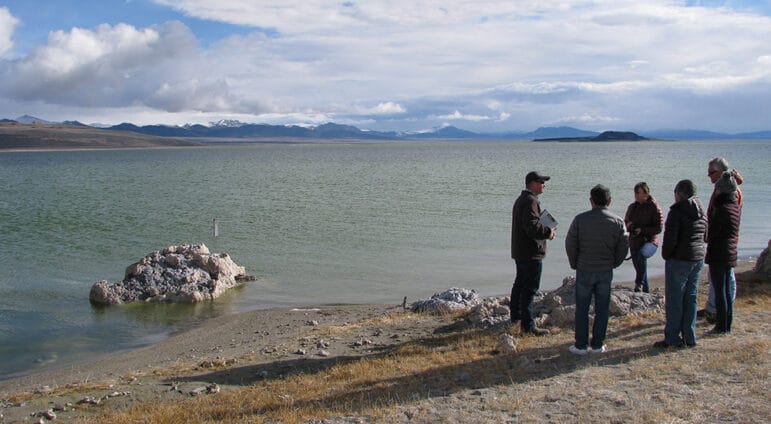
Like we do every year, next Friday, April 1, Mono Lake Committee staff will meet staff from the Los Angeles Department of Water & Power (DWP) down at Mono Lake’s shore to read the lake level gauge together. The reading of the lake’s elevation will determine how much water DWP can divert from the streams in the subsequent twelve months. And this year the moment will be dramatic!
The lake is closer to the important 6380-foot threshold than it ever has been for an April 1 reading. Just this morning the vast surface of Mono Lake, twice the size of San Francisco, was a mere inch below 6380′.

If the lake is still below 6380′ on April 1, then automatic State Water Board protections kick into action and DWP’s allowed stream diversions will be reduced. This requirement was designed to respond to the many perils created by the lake being so low.
Based on our frequent lake level gauge readings, analysis of historic lake fluctuations, and weather forecasts, we think it’s likely Mono Lake will still be below 6380′ next Friday. But a rise of just 0.09′ would push the lake above that mark—and we won’t know anything for sure until April 1.
The rules governing DWP’s water exports were set by the California State Water Resources Control Board in 1994. The last time this cutback happened, in 2015, we explained the rules as a sort of stepladder:
You can think of the lake levels as a three-rung stepladder. When we are standing on the ground we are below the lowest rung—6377′. If at any point Mono Lake drops below 6377′, or is projected to, no diversions are allowed. Once we step onto and above the 6377′ rung, stream diversions to Los Angles can flow at 4,500 acre-feet per year. The next step is 6380′. When we reach this point diversions flow at the rate of 16,000 acre-feet per year. The final rung on the ladder requires the biggest step—6391′. This is the final step, and the diversion rules change so we never drop far below it again. Once here, the lake is projected to stabilize around a long-term average of 6392′ and DWP can divert each year after ensuring delivery of the amount required to maintain the creeks and lake level.
DWP’s historic excessive water diversions caused Mono Lake to fall to the low levels that currently threaten the ecosystem and human health. Despite the State Water Board mandate to raise the lake to the healthy 6392-foot level, progress remains elusive. The requirement that DWP reduce surface water exports by 72% will give Mono Lake a bit of a break. But these automatic protections—if triggered—just underscore that a new plan is needed to raise the lake.

Top photo by Elin Ljung.
